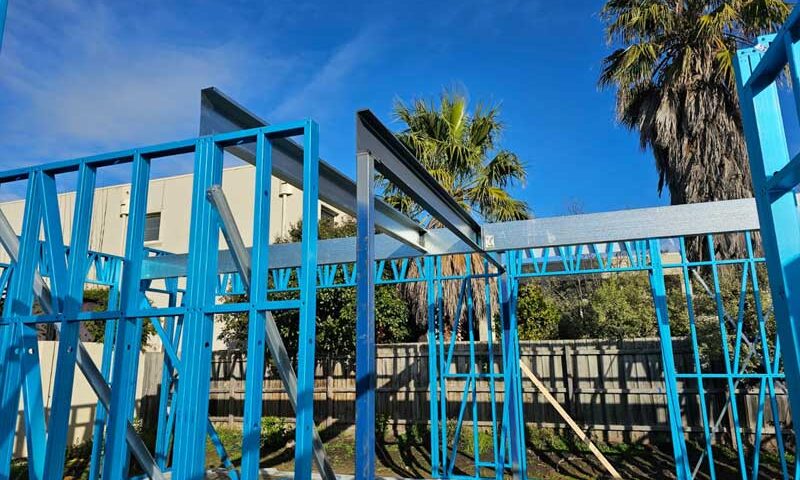Light Gauge Steel (LGS), often referred to as cold-formed steel, is a popular material in modern construction due to its numerous advantages in structural framing. This form of steel exhibits outstanding flexibility and efficiency during the fabrication process, rendering it a preferred choice for many developers and architects. Its hallmark characteristics, including strength, durability, and precision, distinguish it from other framing options like heavy gauge steel and wood.
The fabrication process of LGS involves shaping thin sheets of steel, typically between 0.6mm and 1.6mm, into specific profiles for construction purposes. This process, which utilises roll forming, takes advantage of the malleable nature of steel at room temperature, thus eliminating the need for intense heat. Notably, the design manual for LGS encourages innovative structural configurations that can efficiently support multi-storey buildings, making it a versatile material for diverse construction projects.

Wood and Light Gauge Steel Framing
When comparing LGS and wood framing, several distinctive advantages and disadvantages surface. The high strength-to-weight ratio of LGS gives it an edge over traditional wood framing. LGS is lighter, making it easier to handle and reducing transportation costs. In addition, LGS has excellent dimensional stability; it does not shrink, warp, or twist, providing superior finish quality, thereby reducing the need for call-backs for rectification work.
The termite-resistant and non-combustible properties of LGS framing make it a safer choice in the Australian context, where both fire and termites pose significant risks. Moreover, the production of LGS framing involves lesser waste, marking it as a more sustainable construction solution compared to wood framing.
However, one potential drawback of LGS is its thermal conductivity. Steel conducts heat more rapidly than wood, potentially leading to increased energy consumption for heating or cooling. Yet, this can be mitigated by using effective insulation and efficient design strategies.
Heavy Gauge and Light Gauge Steel Framing
Heavy Gauge Steel (HGS) and Light Gauge Steel (LGS) are two broad categories of steel used in construction, each with its own set of advantages and challenges. HGS is generally used in commercial and industrial structures, whereas LGS is more prevalent in residential and light commercial construction.
Heavy gauge steel, due to its thickness and strength, provides a robust solution for large-scale, high-load structures. However, HGS requires more resources for fabrication and transportation due to its weight and size. Moreover, HGS demands specialized labor and machinery for its construction and installation, thereby increasing the project’s cost.
On the other hand, LGS, due to its lighter weight and flexibility, is easier to handle and install, making it a cost-effective solution for smaller projects. LGS framing can be prefabricated off-site, reducing on-site labor and waste. While LGS may not bear the same heavy loads as HGS, it is still remarkably strong for its weight, offering excellent resistance against seismic forces and high winds.
Conclusively, the choice between heavy gauge and light gauge steel framing largely depends on the nature of the project. Both have their roles in the diverse world of construction, offering unique advantages over the other depending on the specific application.
In conclusion, Light Gauge Steel (LGS) presents a compelling case for a revolution in modern construction practices. Renowned for its exceptional strength-to-weight ratio, dimensional accuracy, recyclability, and design flexibility, it outperforms traditional wood framing and even heavy gauge steel in many aspects. Nevertheless, the advantages of LGS aren’t without a few drawbacks. Its susceptibility to corrosion requires diligent planning for proper treatments, while its higher upfront cost can be a barrier for some projects.
Moreover, LGS framing offers a unique blend of sustainability and durability that makes it ideal for a wide variety of steel construction applications, from residential to commercial structures. While it does require specialised tools and expertise for installation, the long-term benefits it provides, including energy efficiency, reduced waste, and streamlined fabrication processes, offer significant returns on investment. To effectively utilize LGS, leveraging industry-specific design manuals and guidelines is critical.
The future of construction is evolving, and Light Gauge Steel framing stands at the forefront of this transformation, promising safer, faster, and more efficient building practices. It signifies a paradigm shift in how we approach construction, embodying the next step in the pursuit of superior building materials and methodologies. The Australian construction industry would do well to embrace it, using it not as a substitute but a valuable addition to existing building practices.









